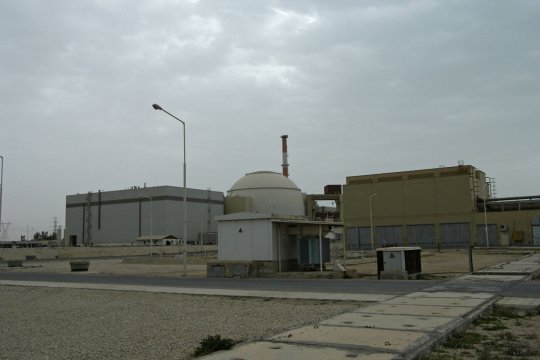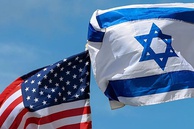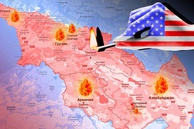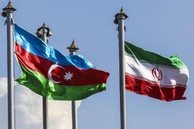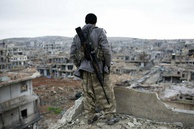The nuclear problem of Iran is once again becoming the focus of global media attention, and there are several reasons for this.
First, US President-elect Joe Biden (although no official results of the November 3 vote have been announced yet), who generally rejects the foreign policy of the current President Donald Trump, said that he will make America’s return to the landmark Joint Comprehensive Plan of Action (JCPOA), also known as the Iran nuclear deal, one of his administration’s main priorities. The announcement was certainly not lost on political scientists, analysts and journalists, who started actively discussing the new situation around the Iranian nuclear problem.
Second, this renewed interest in the future of the 2015 accord is also explained by the "persistence" of the Trump administration, which, 60 days now left before it will be moving out of the White House, is ramping up its traditional "maximum pressure" on Iran by introducing a new set of sanctions...
Third, this is the internal political struggle in Iran, now that President Hassan Rouhani – one of the main authors of the JCPOA – is due to step down when his second term in office expires in 2021.
Rouhani’s upcoming departure has been a boost to the conservative radicals predominant in the government, who are all set to step up their fight against the JCPOA. Indeed, their discontent was directed not so much at Washington, as at President Rouhani, who in their opinion, which has been gaining popularity at home, made a mistake by joining President Barack Obama in creating the JCPOA. This means that Rouhani's successor may be less open to communication with the West, [1] and, to a certain extent, unwilling to abide by the terms of the agreement.
Throughout Donald Trump's four years in the White House, President Rouhani has been trying hard to keep the JCPOA alive and give diplomacy a chance even though Supreme Leader Ayatollah Khamenei has increasingly warned against contacts with Washington, especially since President Trump unilaterally withdrew from the nuclear accord in 2018.
However, mindful of the Trump administration’s aggressive policy towards the Islamic Republic, exactly a year after the US pullout from the JCPOA, the Iranian leadership began to gradually scale back its commitments under the nuclear deal.
Meanwhile, the "nuclear situation" in Iran now looks rather alarming and even dangerous.
In a confidential report circulated to member states on November 10, the International Atomic Energy Agency (IAEA) said that, as of November 2, Iran’s stockpile of low-enriched uranium had reached 2,442.9 kilograms, [2] which is 12 times the amount allowed under the JCPOA. Under the agreement, Iran is only allowed to produce up to 300kg of enriched uranium in a particular compound form (UF6), which is the equivalent of 202.8kg of uranium. [3]
The IAEA added that Iran was continuing to enrich uranium to a purity of up to 4.5% - in violation of the 3.67% threshold agreed under the 2015 deal. [4]
According to the UN nuclear watchdog’s latest quarterly report, Iran has completed the deployment of the first set of advanced uranium enrichment centrifuges at an underground facility in Natanz. Tehran had earlier informed the IAEA of its intention to transfer three cascades of advanced centrifuges to Natanz. The first cascade of IR-2m centrifuges, has already been installed and connected, but is not yet operational, since gaseous uranium hexafluoride, the feedstock for the production of enriched uranium, is not yet supplied to the system. The Iranians are also installing a second cascade of more efficient IR-4 centrifuges. A third cascade of IR-6 centrifuges is now in the pipeline.
Moving underground equipment previously located on the surface, and using more advanced centrifuges than the first generation IR-1 units [5] is a violation of Tehran’s obligations under the JCPOA. [6]
The Natanz nuclear facility, located about 200 kilometers south of Tehran, is an advanced complex, consisting of two main facilities - the Experimental Plant, commissioned in 2003, and the Industrial Plant, commissioned in 2007. The latter consists of two underground reinforced concrete buildings, each divided into eight workshops. The plant is well protected against air strikes with an almost eight-meter-thick high-strength concrete roof, covered with a 22-meter layer of earth.
In late October, IAEA Director General Rafael Grossi confirmed that Iran is also building an underground facility in Natanz to assemble centrifuges of a new generation, more productive and efficient. [7] This is equally at variance with the terms of the JCPOA accord, which has suffered erosion and destabilization since the US withdrawal.
Just as Academician Alexey Arbatov very aptly noted in his article “Iranian Nuclear Perspective”: “There is no reason for such underground structures and, accordingly, for colossal additional costs if, as Tehran says, they are for peaceful nuclear energy generation. References to the threat of an Israeli air strike are equally unconvincing, since what we are talking about is ‘peaceful atom.’ Indeed, all other elements of the nuclear industry are not protected from an airstrike and can be destroyed if the enemy seeks to prevent the development of peaceful, rather than military, nuclear energy in Iran. History knows only two examples of similar underground nuclear power projects: an underground nuclear power plant (Atomgrad) built by the Soviet Union near Krasnoyarsk to produce weapons-grade plutonium, and a uranium enrichment complex, apparently being built in the mountains of North Korea. Both of a military nature, of course, meant to produce weapons-grade nuclear materials even during the war, despite air strikes.” [8]
Judging by the latest IAEA report, the agency is also unsatisfied with Tehran's explanations about the presence of nuclear materials at an undeclared facility in the village of Turkuzabad (about 20 km south of Tehran), where man-made uranium particles were found last year, and continues to consider the Iranian response "technically unreliable.” [9]
In his November 13, 2020 report about the agency’s work to the UN General Assembly, IAEA Director General Rafael Grossi said that the IAEA continues to verify the non-proliferation of nuclear materials pledged by Iran in keeping with the terms of its Safeguards Agreement. In August, Grossi visited Tehran and met with President Rouhani and other senior Iranian officials. During the visit, the sides agreed to settle certain issues pertaining to the implementation of safeguards, including IAEA inspectors’ access to two facilities in Iran. Inspections have since been carried out at both locations and environmental samples taken by inspectors are being analyzed.
“I welcome the agreement between the agency and Iran, which I hope will reinforce cooperation and enhance mutual trust,” Rafael Grossi summed up. [10]
Even though Iran is formally de jure involved in the nuclear deal, the hardline conservative majority in the country’s political elite opposed to the JCPOA has taken a new step towards Iran's withdrawal from the NPT.
In a statement issued on November 11, 2020, Khojat-ol-eslam [11] Mojtaba Zonnour, chairman of the National Security and Foreign Policy Committee of the Mejlis (Iranian parliament), said that the MPs had approved (but not yet passed as law) a “Strategic Plan for Countering Anti-Iranian Sanctions.” [12]
According to the “Plan,” upon its approval in parliament, the government shall suspend within the next two months any access by IAEA inspectors outside the provisions of the Additional Protocol. [13] And also, if Iran's banking relations with Europe and Iranian oil sales do not return to normal within three months after the adoption of the law, the government is to stop voluntary implementation of the Additional Protocol.
The Iranians insist that the level of cooperation that has in recent years been going on between Tehran and the IAEA in monitoring the country’s nuclear program was even higher than what is envisaged by the Additional Protocol, including their introduction of a special checkup regime for IAEA inspectors. Moreover, Tehran never misses a chance to remind that before the JCPOA, Europe was buying between 700,000 and one million barrels of Iranian oil a day, and that economic and banking relations were normal.
Mojtaba Zonnour emphasized that the United States walked out of the JCPOA in order to impose new sanctions on the Islamic Republic, adding that the Europeans had failed to meet their obligations under the JCPOA and had been cheating Iran for several years. He also noted that in keeping with the “Strategic Plan for Countering Anti-Iranian Sanctions” the IAEA will only be allowed to monitor the implementation of the Safeguards Agreement and the NPT requirements.
Upon its approval by the Mejlis, the "Plan" envisions a radical refusal by Iran to comply with a number of key obligations under the JCPOA.
Thus, the Fordow nuclear fuel enrichment plant, redesigned in line with the JCPOA requirements into a research center, will again become a plant for the production of enriched uranium. The number of new IR-6 centrifuges there will be increased to 1,000 by the end of the Iranian calendar year (March 20, 2021) to turn out up to 120 kg of uranium enriched to 20% a year.
The Iranians are also going to expand their enrichment capacities and bring the production of uranium enriched to 5% up to at least 500 kg per month, compared to just 300 kg allowed by the JCPOA.
Within four months from the date of the Strategic Plan’s entry into force, Tehran intends to restore the 40 megawatt heavy water reactor in Arak to the level it operated at prior to the conclusion of the JCPOA accord, which had it redesigned so that it would not be able to produce weapons-grade plutonium. In January 2016, the reactor core was dismantled.
As Mojtaba Zonnour quite frankly explained in his statement, “In the above-mentioned Plan, we determined the extent to which our nuclear activities would intensify and stated that we had abandoned the measures taken in accordance with the requirements of the JCPOA. For example, we decided to increase the level of uranium enrichment, increase the amount of uranium accumulation, bring the 40 megawatt heavy-water reactor in Arak to its pre-JCPOA state, install modern centrifuges, and the like. <...> The Plan singles out two very important points: one is that if, after we enact the law on the "Strategic Plan for Countering Anti-Iranian Sanctions," the Europeans change their behavior and resume their commitments under the JCPOA, of if the US wants to return to the JCPOA, the Iranian government will no longer have the authority to unilaterally suspend the implementation of this law. It will need permission from parliament - it is the Majlis that makes the final decision. ” [14]
It is worth mentioning here that in its draft law the Mejlis provides for criminal responsibility for non-compliance by individuals and legal entities with the provisions of the law on the "Strategic Plan…” with violators facing punishment of up to 20 years behind bars. [15]
Enactment of the law on the "Strategic Plan for Countering Anti-Iranian Sanctions" and its implementation by the government is tantamount to Iran’s withdrawal from the JCPOA. Moreover, Mojtaba Zonnour said that the government could fast-track the adoption of the law on the "Plan," as there is an administrative and legal opportunity for it to be formally considered by the parliamentary Commission on National Security and Foreign Policy within 10 days, and subsequently adopted by an open session of the Majlis.
This means that by the time US President-elect Joe Biden takes office on January 20, 2021, the "Plan" may have already been adopted. The Iranian authorities obviously had this date very much in mind when unveiling the “Plan” to the general public.
On the one hand, the draft law on the "Strategic Plan for Countering Anti-Iranian Sanctions" can be seen as an attempt by Tehran to “blackmail” the new US administration, as well as Britain and the European Union, in order to achieve the main goal of lifting the sanctions even by restoring in some form the JCPOA accord (or drawing up JCPO-2), but on Iranian terms. On the other - to get a bargaining chip for a future dialogue, possibly with the very same P5+1 group of world powers (Russia, US, Britain, France, China and Germany), but now a dialogue from a position of strength.
No wonder the already familiar Khojat-ol-eslam Zonnour said: “In fact, the nature of [US] arrogance is such that when they see you weak, they put more pressure on you, and if our position against the system of domination and arrogance is weak, this does not serve our interests. Consequently, the Iranian people have the right to respond to questions from a position of dignity and strength.” [16]
As for Khojat-al-eslam Zonnour, he is a radical politician and the fiercest opponent of the JCPOA and a rapprochement with the West in parliament. The following statement tells it all: “Unfortunately, today some of our statesmen use expressions that are contrary to the dignity of the Iranian people, our authority and self-respect. The fact that in their tweets and comments our president and first vice president say that ‘God willing, the new US administration will return to the law and fulfill its obligations’ these are not correct or noble things to say. Such words encourage the enemy to defy its commitments, and when it doesn’t see our resolve and thinks we are passive and asking for a favor, it raises the bar and tries to score more points. [17]
Mojtaba Zonnour’s activity can certainly be viewed as an example of a tough internal political struggle, but this way or another his views resonate with the overwhelming majority of members of the current parliament. And the issues of the JCPOA and general opposition to the United States and Europe were not invented by Zonnour alone.
Thus, we can state that the future of the JCPOA is now hanging in the balance as there are powerful forces in both Iran and the US opposed to nuclear deals between the Islamic Republic and the rest of the world. There is still hope, however, that the economic crisis and the threat of social protests will eventually force Tehran to resume contacts with the United States and the other signatories to the JCPOA accord in order to work out conditions for lifting the sanctions.
In turn, as is evident from statements coming from US President-elect Joe Biden, his administration will be ready for a dialogue with Iran on the nuclear issue, and here the positions of Russia, China, the European Union and the UK are no less important for resolving the newly emerged Iranian nuclear problem.
Just how this negotiation process will be carried out and on what conditions is hard to say now, but there is absolutely no doubt that it is going to be extremely difficult, dramatic, contradictory and protracted. The stakes are too high, it is too important for Iran, its neighbors, the entire Near and Middle East, as well as for preserving the nuclear nonproliferation regime.
The views of the author are his own and may differ from the position of the Editorial Board.
--------------------------------------------------------------------------------
[1] Tom O’Connor. Iranians Cheer Biden Win, Hope for End to Sanctions and War Threats But Still Fear for Future. Newsweek. 12.11.2020. https://www.newsweek.com/iranians-cheer-biden-hope-end-sanctions-war-fear-future-1547048
[2] Kiyoko Metzler and David Rising. UN Agency: Iran Uranium Stockpile Still Violates Atomic Deal. Associated Press. 11.11.2020. https://apnews.com/article/europe-iran-united-nations-de8772e3b88bdcbacbe98d1062d25c15
[3] BBC. 12.11.2020. Iran’s Enriched Uranium Stockpile 12 Times Limit, Says IAEA https://www.bbc.com/news/world-middle-east-54912402
[4] Kiyoko Metzler and David Rising. UN Agency: Iran Uranium Stockpile Still Violates Atomic Deal
[5] The JCPOA allows 6104 first generation IR-1 centrifuges in Iran. The rest of the centrifuges are dismantled, stored and stored under the continuous supervision and control of the IAEA. It is prohibited to use new centrifuge models (IR-2, IR-4, IR-5, IR-6b IR-8) for uranium enrichment at Iranian facilities for 10 years (i.e. until 2015). After 2024, Iran can start testing 30 machines of the IR-6 and IR-8 types. See: Resolution 2231 (2015), UNSC. July 20, 2015. UN website http://undocs.org/ru/S/RES/2231(2015)
[6] Francois Murphy. Iran Finishes Moving First Batch of Advanced Centrifuges Underground. Reuters. 11.11.2020. https://www.reuters.com/article/idUSKBN27R2GP
[7] David Rising. UN watchdog: Iran building at underground nuclear facility. Associated Press. 28.10.2020. https://apnews.com/article/iran-iran-nuclear-berlin-united-nations-tehran-effcfe5ea7d691b471355a4b49c7a18c
[8] A.G. Arbatov Iran’s nuclear prospects. “Nuclear disarmament in the context of the Middle East (collected works under the editorship of Alexey Arbatov, Vladimir Dvorkin, Sergey Oznobishchev) Institute of World Economy and International Relations of the Russian Academy of Sciences., M. 2013 – p.34.
[9] Kiyoko Metzler and David Rising. UN Agency: Iran Uranium Stockpile Still Violates Atomic Deal.
[10] Website of Nuclear Energy-2.0 news portal, 13.11.2020. Rafael Grossi, report on IAEA work to the UN General Assembly. https://www.atomic-energy.ru/news/2020/11/13/108818
[11] Khojat-ol-eslam – one of the highest Shiite religious titles, along with Ayatollah and Great Ayatollah, but lower in rank.
[12] Mojtaba Zonnur Control over JCPOA implementation in Iran will be limited. Mehr news agency website 21 Aban, 1399 (11.11.2020) https://www.mehrnews.com/news/5066696/%D9%86%D8%B8%D8%A7%D8%B1%D8%AA-%D9%87%D8%A7%DB%8C-%D8%A8%D8%B1%D8%AC%D8%A7%D9%85%DB%8C-%D9%85%D8%AD%D8%AF%D9%88%D8%AF%D8%AA%D8%B1-%D9%85%DB%8C-%D8%B4%D9%88%D8%AF-%D8%AF%D8%B1-%D8%B7%D8%B1%D8%AD-%D9%85%D8%AC%D9%84%D8%B3-%D8%AC%D8%B1%D9%85-%D8%A7%D9%86%DA%AF%D8%A7%D8%B1%DB%8C-%DA%A9%D8%B1%D8%AF%DB%8C%D9%85
[13] To help prevent the further proliferation of nuclear weapons, the IAEA uses the Safeguards Agreement system. Safeguards are a set of measures, by implementing which the IAEA seeks to confirm that the state is fulfilling its international obligations not to use nuclear programs to create nuclear weapons.
Most of the Safeguards Agreements have been concluded with states that, at the international level, on the basis of the Treaty on the Non-Proliferation of Nuclear Weapons (NPT), in respect of which the IAEA is the verifying body, have committed themselves not to possess nuclear weapons.
The Additional Protocol to Country Safeguards Agreements further strengthens the IAEA's verification regime. Under such a protocol, states are required to provide the IAEA with more complete information on all aspects of their activities within the nuclear fuel cycle. They should also give the IAEA wider access rights and enable it to use the most advanced verification technologies. That is, the Additional Protocol expands the IAEA's rights in the implementation of inspection activities and provides for: lifting restrictions on the exclusion of specific inspectors from nuclear facilities, simplifying the visa regime, the possibility of unannounced inspections and "sudden" inspections with notification of the visit of international inspectors to facilities in less than 24 hours, the use of data on environmental monitoring for the purpose of detecting undeclared activities, etc. This monitoring system allows the IAEA to provide more reliable guarantees that nuclear material will not be switched from peaceful to military purposes. UN IAEA website. https://www.un.org/ru/ga/iaea/facts.shtml
[14] Mojtaba Zonnur. Control over JCPOA implementation in Iran will be limited.
[15] Ibid.
[16] Ibid.
[17] Ibid.
read more in our Telegram-channel https://t.me/The_International_Affairs

 13:24 24.11.2020 •
13:24 24.11.2020 •
